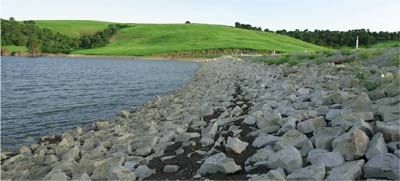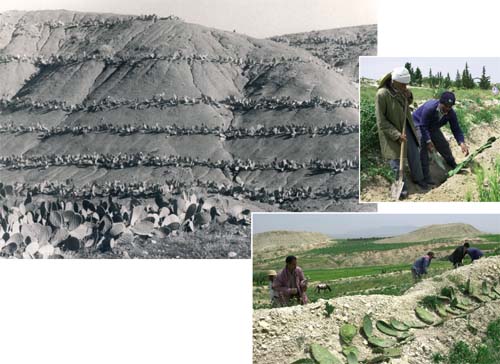How international assistance supports a national strategy
The Water and Soil Conservation Programme reinforces a longstanding, major effort by the Government of Tunisia to rehabilitate its drylands. Progress made over the years can serve as a blueprint for other countries that want to achieve sustainable results in this important area.

Reservoirs, like this one built by the programme in Zaghouan province, have helped transform Tunisian agriculture.
"Every drop of rain that falls should be used and not reach the sea."
Jalel El Faleh
National Programme Coordinator
The Water and Soil Conservation Programme reinforces a longstanding and major effort by the Government of Tunisia to rehabilitate its drylands.
Between 1990 and 2000, 640 irrigation dams were built in Tunisia, more than during the previous 90 years. Financed with national and international funds, the reservoirs have helped increase agricultural production to the point where it now represents 17 percent of the country's Gross National Product.
The Department of Water and Soil Conservation, created in 1984, became in 2002 the Directorate General for the Conservation and Management of Agricultural Lands in the Ministry of Agriculture, Environment and Water Resources. The Directorate General has the mandate to transform water and soil conservation into a genuine development activity, not simply a task for engineers and heavy equipment. It plans and conducts training and information campaigns and encourages local cooperatives and associations of producers. International assistance supports these activities.
In Tunisia, the global water and soil conservation strategy has as its guiding principle that "every drop of rain that falls should be used and not reach the sea," noted Jalel El Faleh, national coordinator of the programme.
He estimated that at the present rate of conservation activity it would take several decades to rehabilitate all recoverable land.
Of 34 billion cubic metres of precipitation in Tunisia only 4.2 billion cubic metres are available as fresh water resources; the rest evaporates. About 1.5 billion cubic metres infiltrates and replenishes groundwater reserves, while 2.7 billion cubic metres run off. Part of the latter is being targeted for water harvesting.
At the moment, different government programmes have allowed the capturing of around 2 billion cubic metres of runoff. The Government of Tunisia asked FAO for technical assistance to try to maximize use of runoff that could not be collected in reservoirs. That is why the Water and Soil Conservation Programme described in this booklet was launched.

This photo, taken In 1970, shows cacti planted by an FAO project in Tunisia to demonstrate anti-erosion measures. Now, FAO is executing a programme (right) to restore 12 000 hectares of degraded land using similar techniques.
FAO/7873/I/8a/F. Botts